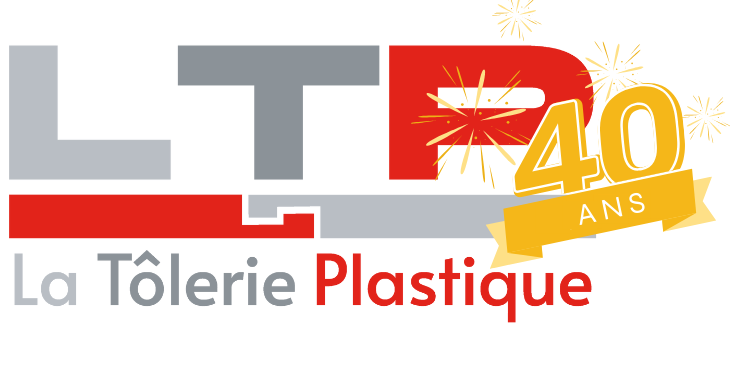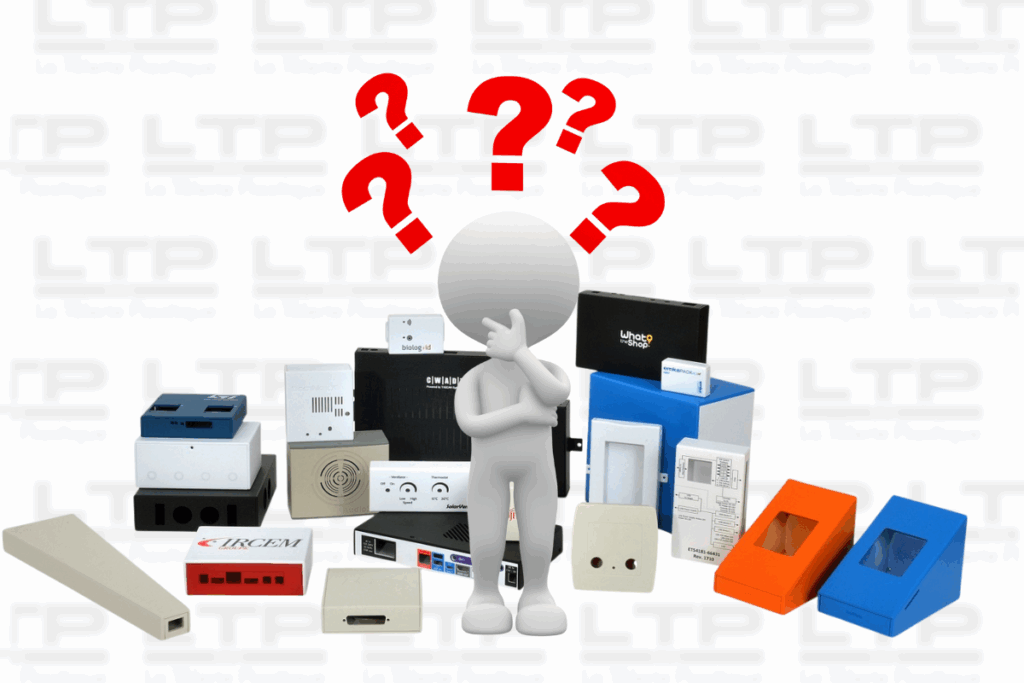Designing a custom plastic enclosure to protect an electronic system involves many technical, regulatory, and sometimes aesthetic constraints. LTP’s enclosure technology offers a mould-free alternative, perfectly suited for small and medium production runs (5 to 2000 units).
This article answers the 10 most frequently asked questions by engineers, project managers, and design offices, to provide a clear overview of the possibilities and limitations of this innovative solution.
1. What results can be achieved with LTP enclosure technology compared to injection moulding?
LTP enclosure technology enables the production of functional enclosures with a finish close to injection moulding, without investing in tooling. Joint lines are visible but bevelled and refined for a clean, ergonomic look. Precision is controlled (±0.2 to ±0.5 mm) and fully suited for the integration of electronic boards, connectors, or mechanical interfaces. The main visual difference lies in the folded or glued assemblies, absent from a monobloc injected part, but this does not affect the enclosure’s strength or function.
2. What production volumes is your technology suitable for?
The process is optimised for series from 5 to 2000 units, including prototypes, pre-series, and small recurring productions. It is particularly suitable for projects requiring rapid time-to-market, high customisation, or design evolution without tooling constraints.
3. What technical data is required to design and quote a plastic enclosure?
To design a custom plastic enclosure and provide an accurate quote, we need:
– Drawings or 3D files (STEP, DXF, PDF) showing dimensions and necessary cut-outs.
– General data: estimated quantities, usage environment (indoor/outdoor, temperature, humidity, vibrations).
– Internal components: electronic boards, connectors, batteries, displays, with their positioning.
This information allows us to design a tailored solution and provide a detailed quote within an average of 48 hours.
4. To what extent can you replicate or adapt an existing design?
An existing design can generally be reproduced accurately from provided drawings or 3D files. Minor adjustments may be suggested to optimise feasibility:
– Adjustment of bending radii
– Adaptation of functional holes (often +0.2 to +0.3 mm) for better assembly
– Selection of the most suitable fixings
These adjustments ensure reliable, repeatable, and durable production.
LTP company: design and development of custom enclosures
5. What materials do you use, and are they REACH, RoHS, PFAS compliant?
We primarily use:
– ABS: good rigidity, excellent machinability, suited for indoor industrial applications.
– Polycarbonate (PC): high impact resistance, withstands higher temperatures.
– PMMA (plexiglass): used when transparency or a specific visual appearance is required.
– Other technical plastics available for specific needs (chemical resistance, thermal resistance).
All our materials are certified compliant with REACH, RoHS, PFAS regulations and can be supplied in UL94 V-0 grade Underwriter Laboratories (UL) tests materials to UL94 standards
6. What dimensional tolerances do you guarantee with LTP enclosure technology?
– General tolerances: ±0.2 to ±0.5 mm depending on enclosure geometry
– Functional holes: overdimensioning of +0.2 to +0.3 mm recommended for optimal assembly
– Assembly: repeatability controlled with jigs and dimensional checks during series production
These tolerances meet the accuracy requirements of most electronic and industrial applications.
7. Can you create a Faraday cage or ensure conductivity?
Yes, it is possible to integrate electromagnetic shielding (EMI) Electromagnetic shielding — Wikipedia through the application of a conductive paint based on copper or nickel. Depending on requirements, a complete or partial Faraday cage can be created, especially for IoT solutions requiring certain unshielded zones.
8. What mechanical and thermal resistance can your enclosures reach?
Resistance depends on the material and thickness selected:
– ABS: typical use from -20°C to +80°C, good rigidity
– Polycarbonate: very high impact resistance, withstands up to +110°C temporarily
– PMMA: more fragile to impact but offers excellent transparency
9. What is the maximum waterproofing level you can guarantee?
With the right design, LTP enclosure technology allows for waterproofing levels up to IP65. Waterproofing depends on:
– Integration of silicone or compressible foam gaskets
– Screwed fixings with inserts to ensure uniform compression
– Precise design to minimise assembly gaps
Waterproofing tests can be carried out upon request.
10. What aesthetic and marking customisation options do you offer?
All customisation is carried out in-house in our paint workshop and digital printing area. We can apply your specific colours (RAL, PANTONE, NCS) and reproduce your logos, pictograms, and technical markings in high-definition print, for a professional and repeatable finish in series production.
Conclusion
LTP enclosure technology is an agile and reliable solution for designing custom plastic enclosures, ideal for small and medium production runs. It offers flexibility, speed, regulatory compliance, and a wide range of technical options to meet your electronic project requirements.
📞 Contact us today to discuss your custom plastic enclosure needs and discover the innovative solutions we can develop for your projects.
📞 Phone: 0033 (0)2 35 54 63 40 | 📧 Email: sales@ltp.fr

